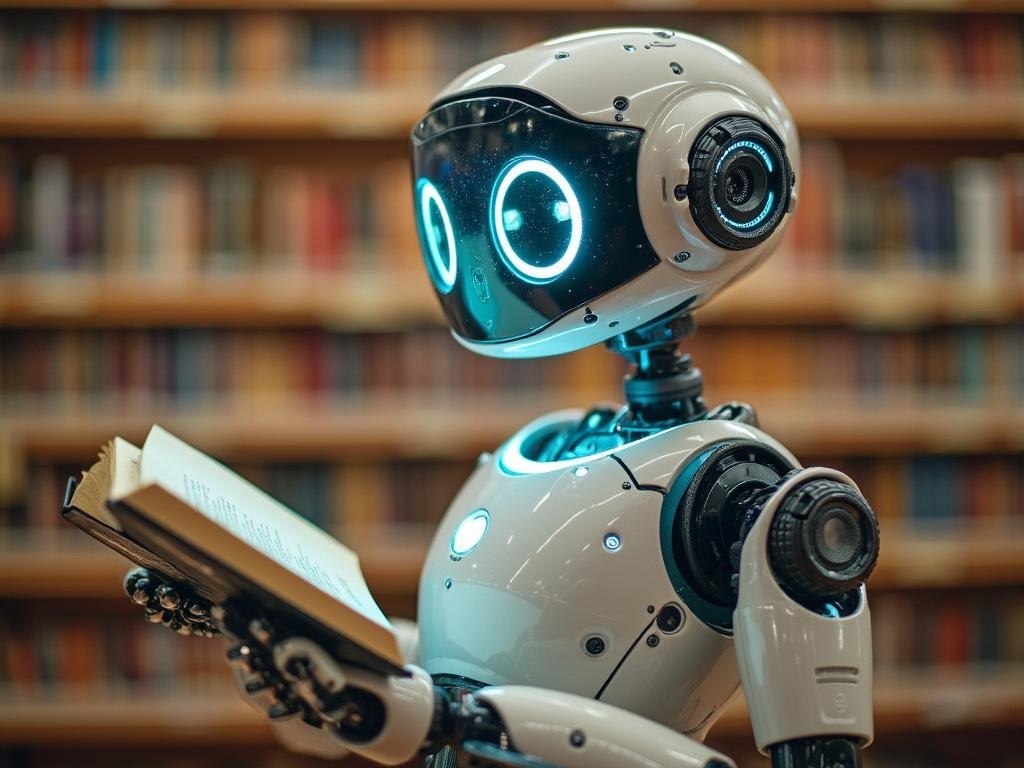The integration of artificial intelligence into creative writing has revolutionized how authors develop compelling plot twists, offering systematic analysis of narrative patterns that even experienced writers might overlook. AI tools now provide writers with data-driven insights into how to write a good story plot, transforming predictable storylines into surprising journeys that captivate readers while maintaining narrative coherence.
Key Takeaways
- AI-assisted stories show measurable improvements in writing quality (26.6%) and engagement for novice writers
- Modern AI tools can analyze plot structure elements to identify strategic opportunities for unexpected twists
- The combination of human creativity and AI analysis creates more cohesive plot development while maintaining thematic integrity
- Specific platforms like AIFreeBox offer customizable plot writing AI features for different genres and creativity levels
- Despite benefits, writers must balance AI assistance with maintaining their unique creative voice to avoid formulaic outcomes
When Machines Become Storytellers: The AI Twist Revolution
The landscape of storytelling has fundamentally changed with AI’s entry into the creative writing space. Modern AI systems don’t just generate text—they analyze vast libraries of narratives to identify patterns that make stories compelling or predictable. This analysis allows them to suggest plot twists that deliberately subvert reader expectations in satisfying ways.
According to a recent Science Advances study, novice writers using AI assistance produced stories that were 26.6% better written and 15.2% less boring than their unaided counterparts. The study highlighted an interesting paradox in creativity: while individual writers experienced significant creative boosts, there was a 10.7% increase in story similarity across the entire sample. This reveals the dual nature of AI assistance in plot development.
The fundamental difference between human and AI approaches to creative storytelling techniques lies in methodology. Humans typically rely on intuition and emotional resonance when crafting plot twists, while AI employs systematic pattern recognition to identify opportunities for narrative deviation. This methodical approach helps writers understand the elements of plot that can be strategically manipulated for maximum reader impact.
Inside the Algorithmic Plot Machine
The inner workings of AI story generators reveal a fascinating process of narrative analysis. Before suggesting a twist, AI systems pre-process key plot elements including character arcs, established conflicts, and thematic elements to ensure any proposed deviation maintains story coherence. This systematic approach helps writers who struggle with how to write a story plot that balances surprise with satisfaction.
AI’s data-pattern approach to narrative surprise is fundamentally different from human intuition. The technology identifies established patterns in the developing story and then calculates strategic deviations that will surprise readers while maintaining thematic integrity. This allows for plot twists that feel both unexpected and inevitable—the hallmark of effective storytelling.
A revealing case study demonstrates how AI transformed a generic corporate thriller. The original storyline featured predictable corporate espionage, but with AI analysis, the narrative incorporated complex betrayal dynamics where the protagonist’s mentor was revealed to be orchestrating events. This transformation exemplifies how AI can identify opportunities for emotional complexity that human writers might miss when developing plot examples.
Quality vs. Diversity: The AI Storytelling Dilemma
The integration of AI into creative writing presents a fascinating paradox. While individual writers—especially novices—experience significant quality improvements in their work, there’s an overall trend toward narrative homogenization across the broader landscape. This raises important questions about the balance between quality and diversity in storytelling.
AI-assisted plot twists demonstrate measurable engagement improvements with readers, but this comes with risks. The algorithmic nature of these suggestions can lead to formulaic outcomes if writers rely too heavily on AI input without adding their unique perspective. This highlights the importance of using AI as a collaborative tool rather than a replacement for human creativity.
Research by Begus (2023) identified specific limitations in AI’s imagination when generating narratives. The study found that while AI excels at identifying opportunities for plot twists based on existing patterns, it struggles with truly novel conceptual leaps that human writers might intuitively make. This limitation becomes particularly apparent in genres that rely heavily on innovation and subversion.
One significant benefit of AI assistance is how it narrows the gap between beginner and experienced writers. Novices who understand the basic elements of story arcs can leverage AI to implement advanced plot structure techniques that might otherwise take years to master through traditional practice.
Practical Twist Generation: Tools for Writers
For writers looking to experiment with AI-assisted plot development, platforms like AIFreeBox offer accessible entry points. These tools provide step-by-step guidance for generating customized plot twists tailored to specific narrative contexts. The interface typically allows writers to input their current story elements and receive suggestions that align with their established narrative.
Setting appropriate creativity parameters is crucial when using plot writing AI. Most platforms offer customizable settings ranging from “Balanced” (typically level 5) for conventional genre fiction to “Experimental” (level 10) for avant-garde narratives. These adjustments help writers find the right balance between reader satisfaction and genuine surprise.
Different genres benefit from specialized twist generation techniques:
- Thrillers often leverage identity revelations and betrayal mechanics
- Fantasy narratives benefit from subverted prophecies and hidden power dynamics
- Mystery stories utilize unreliable narrator techniques and evidence recontextualization
Many writers are surprised to discover the range of cost-free options for AI plot assistance. While premium services offer more customization, several free tools provide valuable plot structure guidance without financial investment. These accessible options democratize the benefits of AI assistance across different economic backgrounds.
The Science of Surprise: Designing Effective AI Twists
The most effective AI-generated plot twists maintain thematic cohesion with the existing narrative. Advanced systems analyze established motifs and thematic elements throughout a story to ensure any twist, no matter how surprising, reinforces rather than contradicts the core narrative themes. This approach helps writers learn how to write a good story plot that feels both surprising and inevitable.
AI systems excel at implementing foreshadowing algorithms that strategically place narrative breadcrumbs throughout a story. These subtle hints are calibrated to be noticeable in retrospect without telegraphing the twist too obviously. This calculated approach to tension-building often surpasses what novice writers can achieve independently.
The strengths of AI twist generation include:
- Systematic pattern recognition across narrative elements
- Consistent thematic integration between twists and established story elements
- Objective analysis of reader expectations based on genre conventions
However, AI plot assistance also has notable weaknesses. The algorithmic nature of these systems can sometimes lead to predictable twist patterns across different stories. Additionally, many AI systems rely heavily on established narrative tropes, which can limit truly groundbreaking innovations in storytelling.
Beyond Today: The Future of AI-Generated Surprises
The evolving landscape of AI storytelling faces significant legal challenges. Questions of copyright and ownership become increasingly complex when creative content emerges from human-AI collaboration. The industry continues to develop frameworks for addressing these issues, though consensus remains elusive.
The most promising future for storytelling lies in evolving human-AI creative partnerships. Rather than viewing AI as a replacement for human creativity, forward-thinking writers are exploring how AI co-authorship can complement human strengths in storytelling. This collaborative approach leverages AI’s analytical capabilities while preserving the emotional intuition that remains uniquely human.
Emerging trends in the industry focus on fair usage guidelines and attribution transparency. As AI assistance becomes more commonplace, writers and publishers are developing standards for acknowledging the role of technology in creative works. These frameworks aim to maintain integrity while embracing the benefits of technological assistance.
Ethical considerations around creative diversity remain paramount as AI assistance becomes more widespread. The industry must address concerns about narrative homogenization by developing systems that encourage divergent thinking rather than convergence toward established patterns. This challenge represents one of the most important frontiers in AI-assisted storytelling.
Embracing the Unexpected: Finding Your AI Twist Balance
Successful writers are discovering that strategic implementation of AI tools for brainstorming can enhance rather than replace their creative voice. By using AI suggestions as a starting point for further development, authors maintain their unique perspective while benefiting from algorithmic insights into effective plot structures and potential twists.
The key to productive AI collaboration lies in balancing technological assistance with personal creativity. Rather than accepting AI suggestions wholesale, experienced writers selectively incorporate elements that align with their vision while discarding those that don’t. This selective approach allows for technological enhancement without creative compromise.
The market for AI writing assistance continues to diversify, with an increasing number of specialized tools focused on specific genres. These specialized platforms offer twist suggestions calibrated to the unique expectations of different narrative traditions, from mystery to romance to science fiction. This specialization provides more relevant plot examples for writers working in specific genres.
I encourage writers at all levels to experiment with AI collaboration while maintaining their narrative authenticity. The technology offers valuable insights into plot structure and twist opportunities, but the most compelling stories will always emerge from the unique human perspective that guides these tools. Your distinct voice remains your most valuable asset in a world of increasingly sophisticated writing assistance.
AI has revolutionized creative writing by offering data-driven insights into plot development. The technology analyzes narrative patterns to help writers craft unexpected yet coherent plot twists. Studies show AI assistance improves writing quality by 26.6% and reduces reader boredom by 15.2%, particularly benefiting novice writers. Unlike human intuition-based approaches, AI uses systematic pattern recognition to identify strategic opportunities for narrative surprises while maintaining thematic integrity. Writers must balance technological assistance with their unique creative voice to avoid the risk of formulaic outcomes and narrative homogenization.
| Key Aspects | Details |
|---|---|
| Primary Benefit | Helps writers create unexpected yet coherent plot twists through data analysis |
| Measurable Improvements | 26.6% better writing quality, 15.2% less reader boredom |
| Methodology Difference | Human: intuition and emotion; AI: systematic pattern recognition |
| Main Challenge | Balancing AI assistance with unique creative voice to avoid formulaic outcomes |
| Future Direction | Human-AI creative partnerships that complement each other’s strengths |



